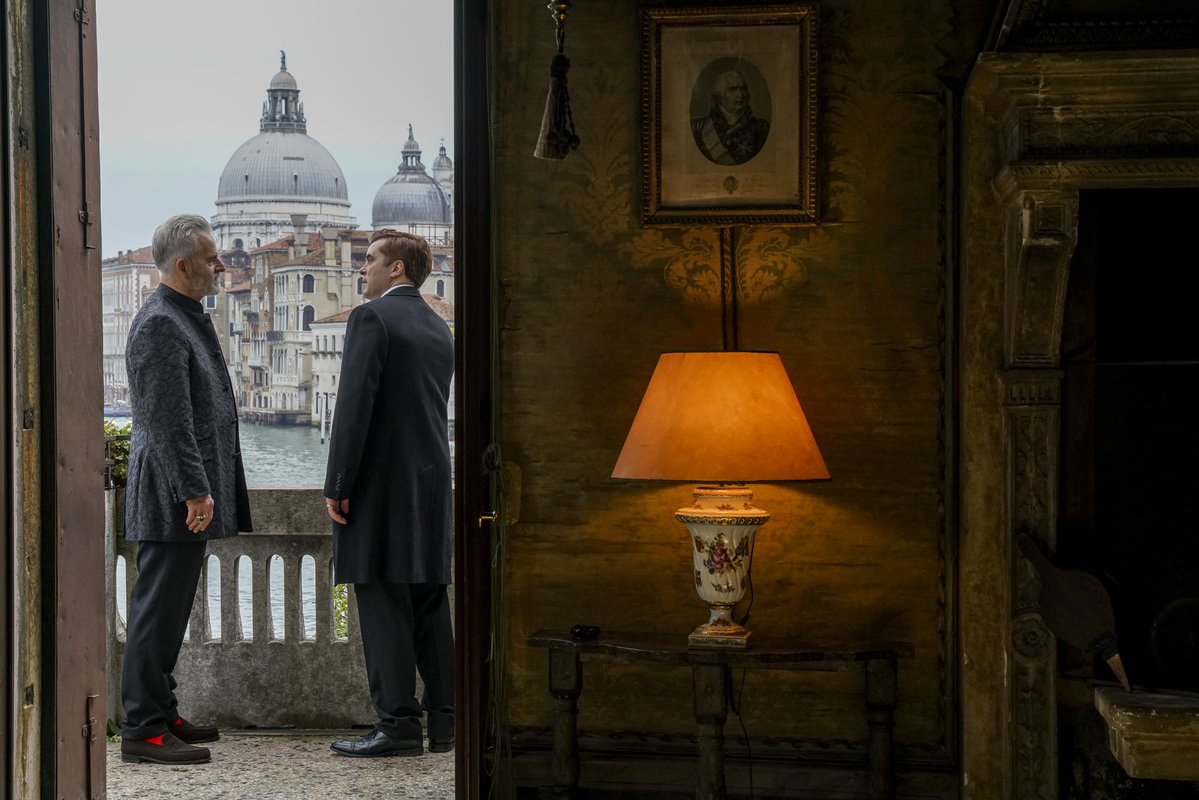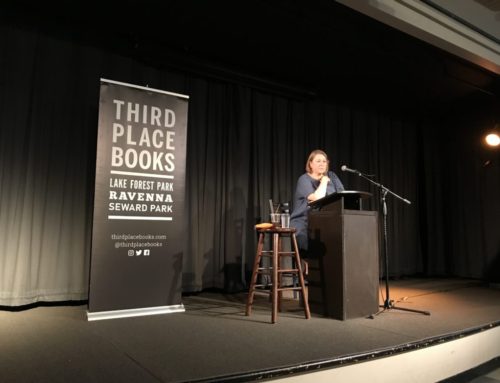While you may dislike the Congregation—especially shady characters like Peter Knox and Gerbert—the Venetian backdrop is a love letter to Venice. And for all the Venetian beauty, we have to thank a talented Venice native, who’s responsible for finding the stunning locations in Venice, as well as the stand-in locations for Sept-Tours and the Village of Saint-Lucien. Her name is Elisa Frasinetti. Elisa shared her adventure with location scouting for A Discovery Of Witches.
Nota bene: As of today, the series has yet to air in Italy.
The Tenth Knot: Ciao Elisa. It’s great to meet you and thank you for chatting with The Tenth Knot today.
Elisa: Ciao. Piacere.
The Tenth Knot: Nice to meet you, Elisa! What an incredible treat for the fans of A Discovery Of Witches to see so much of Venice! How have you chosen the career of location manager?
I sort of stumbled into the location manager career by accident. I worked as a video editor for many years in Milan and when I went back to Venice, I worked as computer science teacher and then in the administration side of TV production. I became initially an assistant location manager for a production of a TV series. When the previous location manager became unavailable for the sequel, the producers called me. I’ve been in the industry for 15 years.
The Tenth Knot: How did you prepare for A Discovery Of Witches?
The first impact was the script and the background information we were given. I tried to understand the background in order to recreate the mood—a bit vampiric and dark.
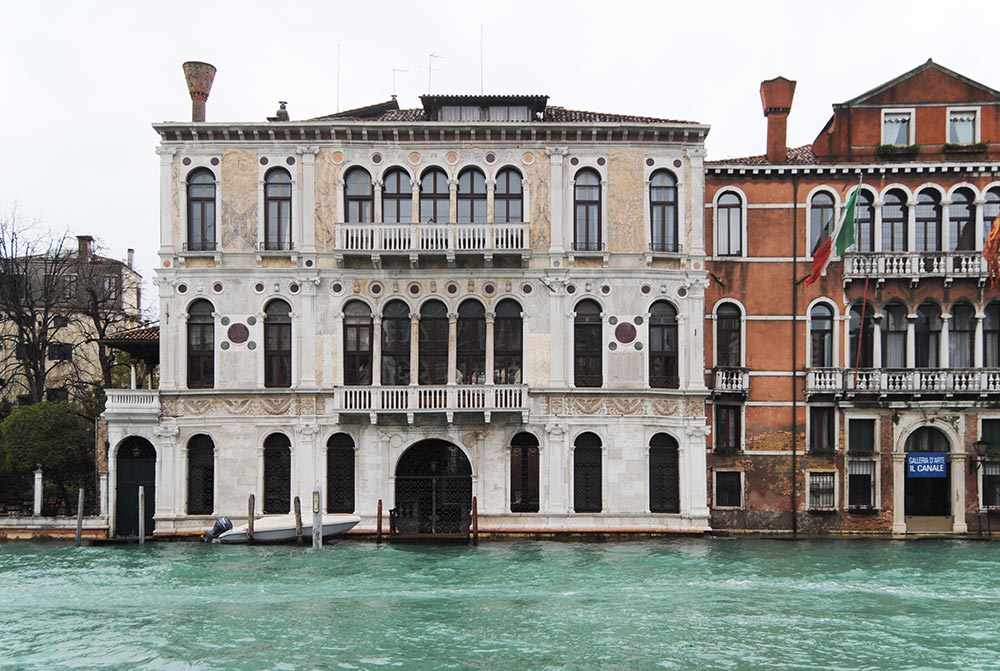
The Tenth Knot: Have you ever met Deborah?
She could not make it to the set in Venice, so I never had a chance to meet her. I knew that the inspiration of Ca’ Chiaromonte was Palazzo Falier, which unfortunately was being used for temporary exhibits, so it was not ideal for the TV series. However, Palazzo Contarini Polignac (aka Palazzo Polignac) was perfect and basically was our first choice. For the island of the Congregation, Isola della Stella in the books, I researched all the island of the Venice Lagoon with similar characteristics, but we were looking for something closer to Venice, so if we were panning on a scene, you could see Venice. San Giorgio Maggiore—which is in front of Venice was the clear best choice for the Congregation island. Filming in Venice is wonderful. It’s like having a big stage.
The Tenth Knot: Who is the lucky resident of Palazzo Polignac in the TV series?
Palazzo Polignac stands in for Gerbert’s mansion in Venice, except for the grand staircase you see in Episode 2 when Juliette walks towards Gerbert, which is filmed at Palazzo Pisani Moretta. The courtyard with the columns and the well was used as the courtyard for the Congregation is also part of Palazzo Polignac.
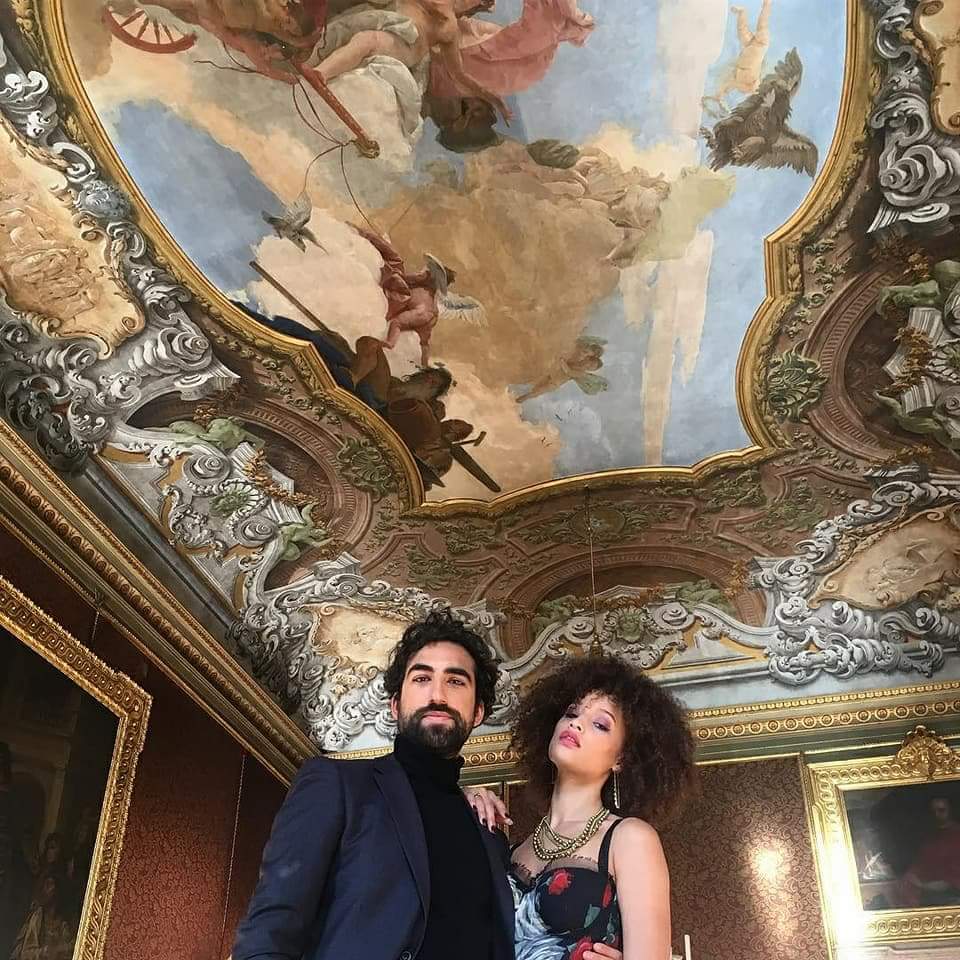
The Tenth Knot: In the Second Episode, when Domenico Michele walks to the morgue to see the corpse of Matthieu Benin, Juliette’s victim, Domenico walks under a beautiful portico which opens to a piazza.
That’s the Campo de l’Abazia, which is my favorite location. I actually live nearby. The door you see is actually the Superintendence for the Fine Arts. It’s the entrance of the palace where they restore artwork, which we had to turn into a morgue (sadly).
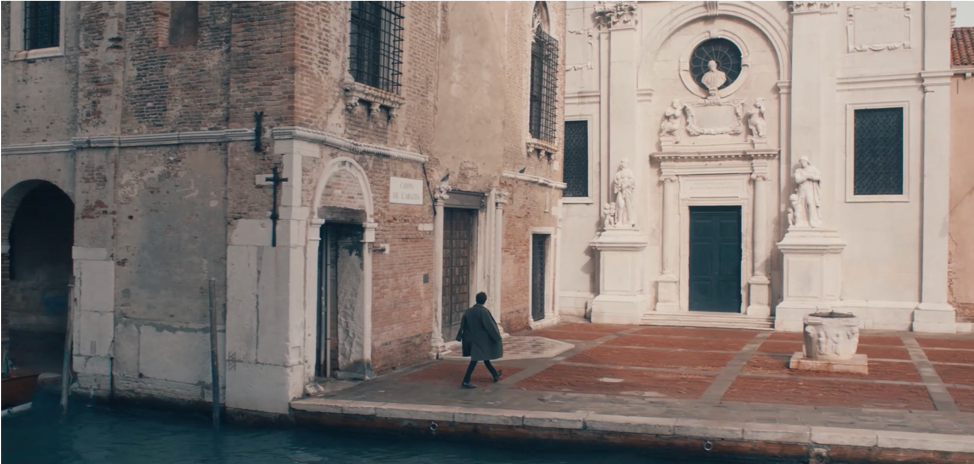
The Tenth Knot: There are other filming locations in Italy that were used to represent the Auvergne in the South of France. Can you tell us more about them?
Yes. The castle of Cini Monselice and Arquà Petrarca, which are about 45 minutes from Venice have been used for filming Sept-Tours and the village of Saint-Lucien. We worked closely with the set designers to use signage in French, such as “Boulangerie” and we have transformed the small square of Arquà Petrarca into a French village.
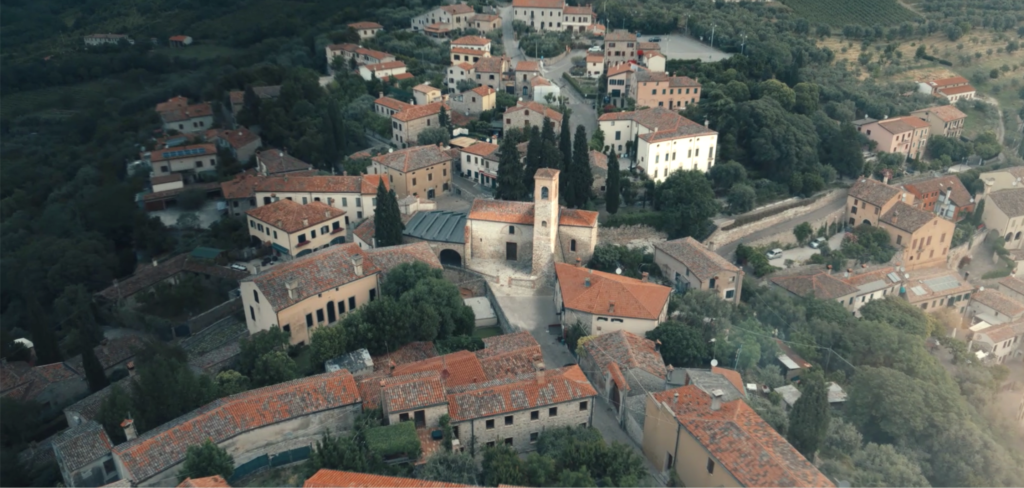
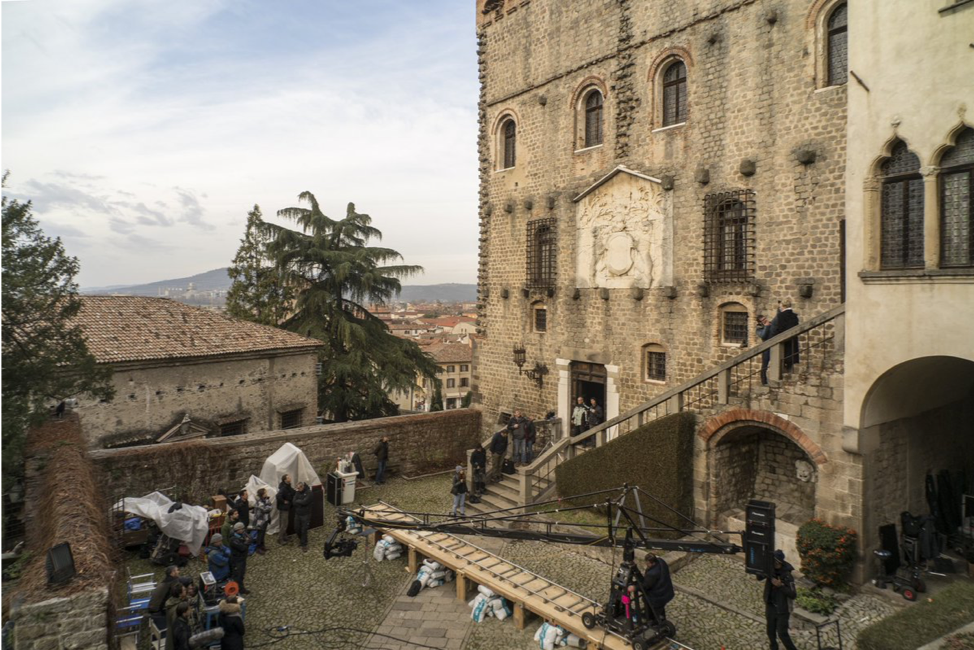
The Tenth Knot: How long does it take to find the “perfect locations?”
Sometimes you get lucky and you find the place that “speaks for itself” and other times, it’s more complicated because you have to use multiple places, so there’s the additional work of cutting and pasting. For example, we looked at 4 or 5 small villages, including Soave and Verona, but the producers almost immediately picked Arquà Petrarca. A couple of years ago, Arquà Petrarca was chosen as one the most beautiful borghi in Italy. That’s the village where the famous Italian Renaissance scholar and poet Francesco Petrarca—commonly anglicized as Petrarch—was born. The castle of Monselice was the closest to Sept-Tours in terms of resemblance. And logistically, the locations (Monselice and Arquà) were close to each other, and to Venice.
The Tenth Knot: Who’s the final approver of the locations?
Fundamentally, it’s the director. The locations really have to work for the director. The initial choice is driven by how close and accessible the locations are, as well as other practical elements, besides being appropriate for the TV series.
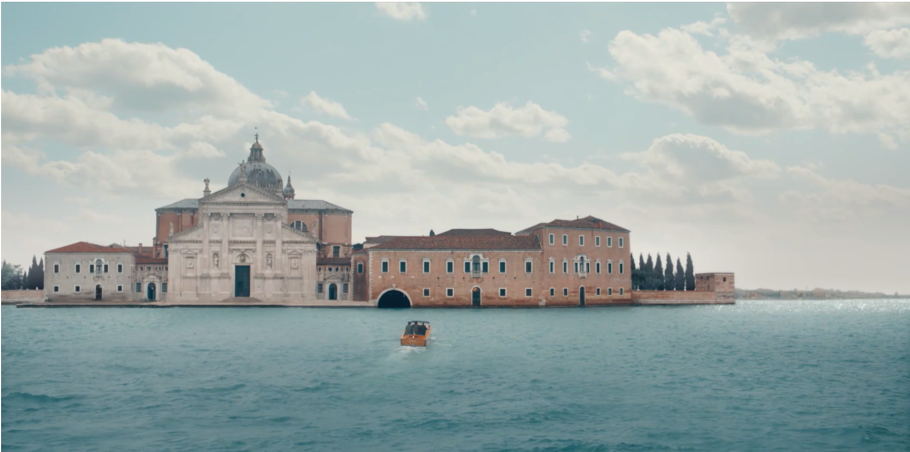
The Tenth Knot: How easy or difficult was filming in Italy?
In a small village, locals welcome you and want to help. Even the mayor and public workers are very helpful. Being on the water, Venice is more complicated from a logistical standpoint. Venetians were very curious about this project since it was different from what they are used to. Hopefully, the series will arrive in Italy soon. For me personally, it was a very special and challenging project. It was hard work, but a ton of fun.
The Tenth Knot: Of all the places you filmed A Discovery Of Witches, which one is your favorite?
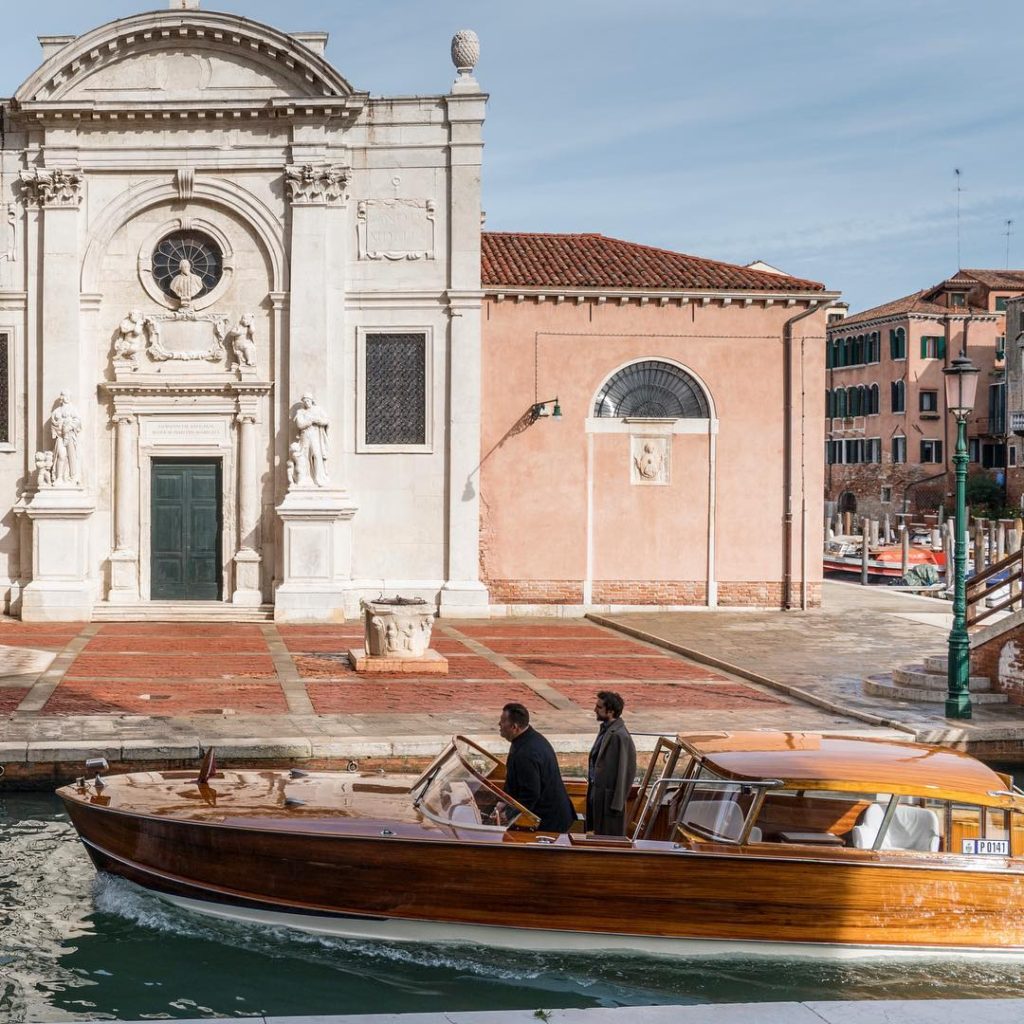
I would say that I like a lot where we filmed by the Chiesa delle Zitelle (Chiesa di Santa Maria della Presentazione (Le Zitelle)) sul Canale delle Giudecca. The footage is very brief and they arrive via canal. The view from Palazzo Polignac towards Piazza S. Marco is a postcard. I would drink coffee non-stop at the small café by the Ponte dell’Accademia, just to be there. The Island of S. Giorgio, which is the entrance of the Congregation, is poignant. There’s a part of me in all these locations.
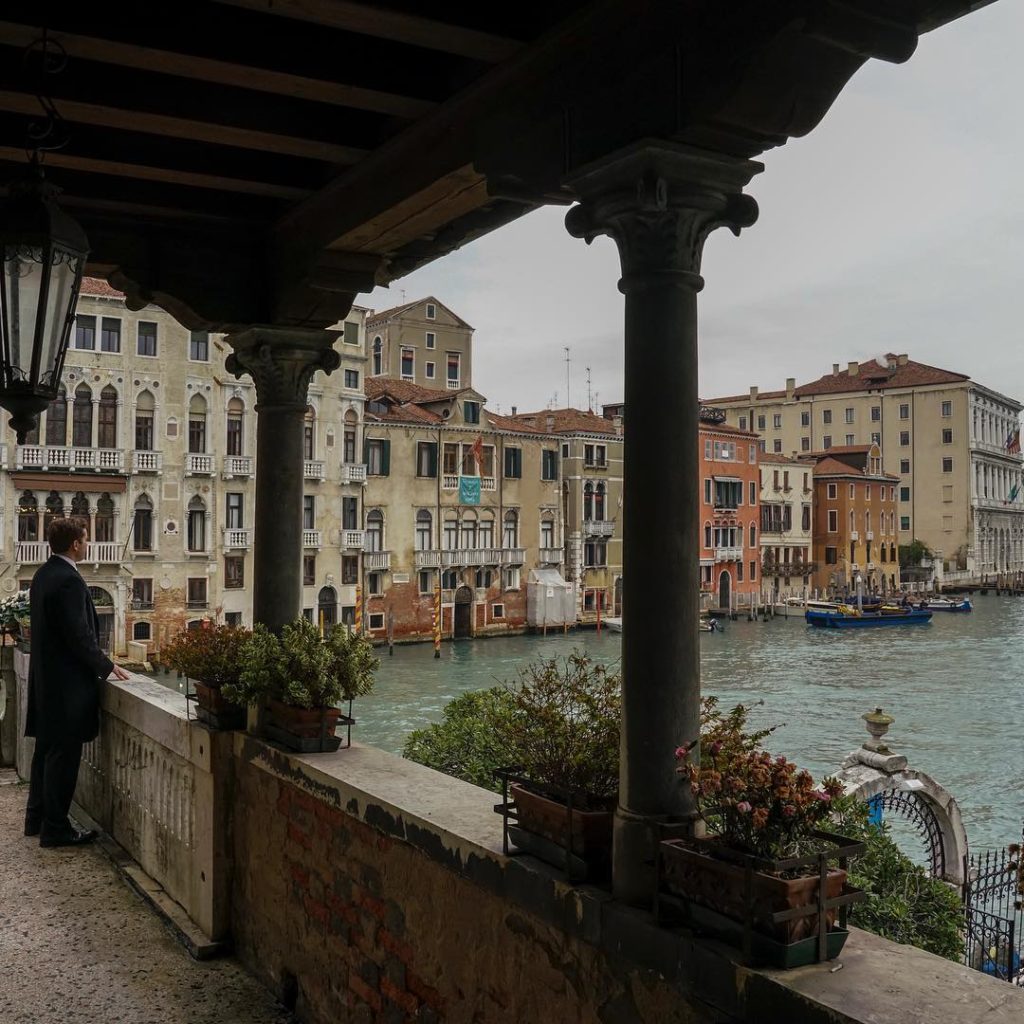
The Tenth Knot: How close did you work with James North and with the CGI experts?
James North is a genius. He makes magic. Since I didn’t work in the Studio, I didn’t get to work very closely with him. The Congregation room and the Witches’ Archives are in the Studio. I did however, work closely with the CGI team. Sept-Tours/Monselice has been augmented with CGI. The old Monselice Castle had a few towers, but today only a big one is still standing, so we had to use some green screens for CGI to add the rest of the towers. The CGI team was on location to study the castle closely and place the green screens in the appropriate places.
The Tenth Knot: Grazie Elisa! It’s a was a pleasure and a privilege speaking with you!
Before closing, we agreed on a follow up interview for Season 2. #happiness
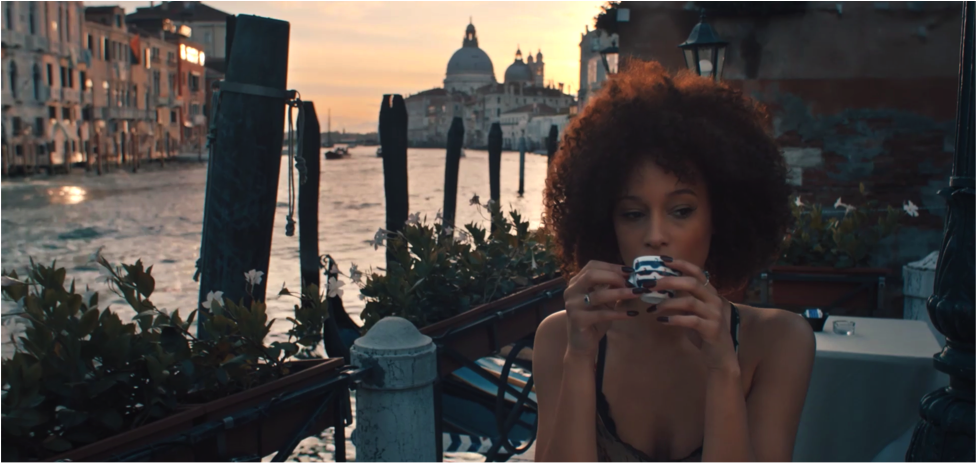
Filming Locations in Italy At-A-Glance
| Locations | TV Series | Book Inspiration |
| Congregation Headquarters | San Giorgio Maggiore (front), Wolf Studios Wales (interior) & Gardens of Palazzo Contarini Polignac (gardens) | Isola di Poveglia & San Francesco del Deserto |
| Gerbert’s Palace | Palazzo Contarini Polignac & Palazzo Pisani Moretta | n/a |
| Sept-Tours | Monselice Castle (exterior & interior) & Wolf Studios Wales (interior) | Château Dauphin, France |
| Saint-Lucien (church) | Oratorio della Santissima Trinità, Arquà Petrarca, Italy | S. Apollinare in Classe, Ravenna |
| Saint-Lucien (village) | Arquà Petrarca, Italy | Saint-Arcons-d’Allier, France |
| Juliette at a café (Ep. 2) | Bar Foscarini, Venice | N/A |
| Morgue (Ep. 2) | Superintendence for the Fine Arts, Campo de l’Abazia | N/A |
| Church exterior with Juliette (Ep. 7) | Chiesa di Santa Maria della Presentazione (Le Zitelle) | N/A |
Recommended Reading
The Art History of All Souls: Saint Lucien’s: Matthew’s Church
The Art History of All Souls: The Body as Text

